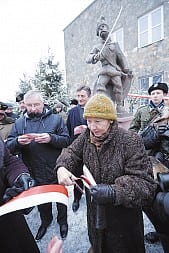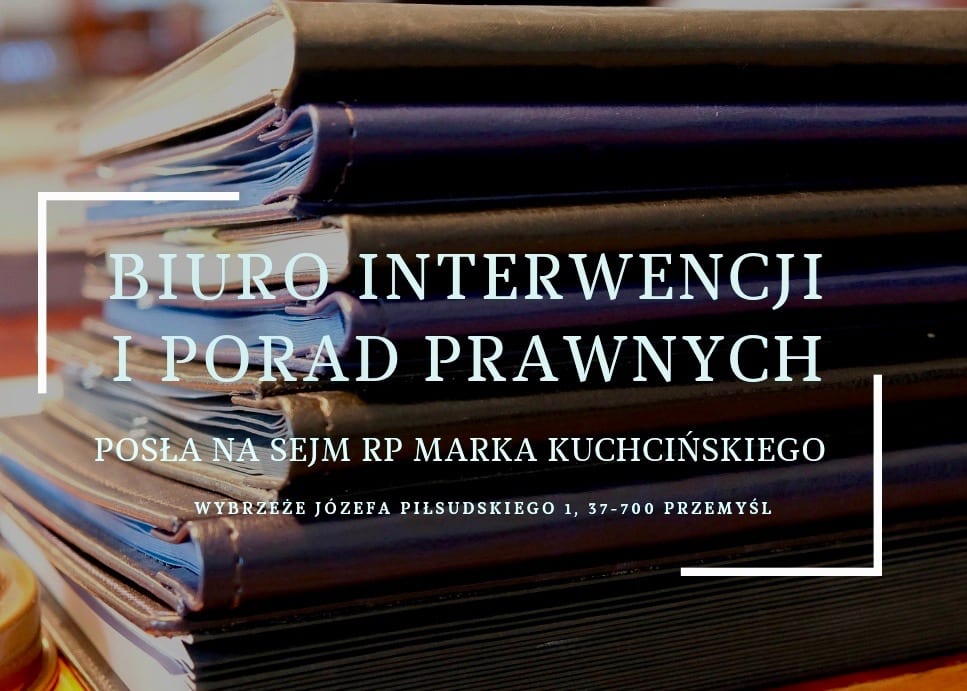 The monument of general Marian Langiewicz, the only monument in Poland commemorating the dictator of the January Uprising and one of its most outstanding commanders, was unveiled yesterday in Wąchock.
The monument of general Marian Langiewicz, the only monument in Poland commemorating the dictator of the January Uprising and one of its most outstanding commanders, was unveiled yesterday in Wąchock.
The ribbon was cut by Marek Kuchciński, Deputy Speaker of the Sejm, Teresa Heda-Snopkiewicz, daughter of the famous Home Army commander General Antoni Heda "Szary", and Andrzej Karykowski from the General Langiewicz Monument Building Committee. They were accompanied by Father Eugeniusz Augustyn, the abbot of the Narchoc Cistercian Monastery.
The monument was erected next to the nearby Educational Complex of the January Uprising Heroes and a few meters from the cross which, since the time of the uprising in 1863, commemorates the resting place of an insurgent unknown by name. The ceremony was attended by representatives of local and provincial authorities as well as a representative of the President of the Republic of Poland, who assumed honorary patronage of the ceremony and sent a letter to its participants.
Due to personal reasons, the President of the Law and Justice party Jarosław Kaczyński did not take part in the ceremony. He wrote in it that the memory of general Langiewicz shows "the importance of the duties imposed on us by those to whom we owe the debt for a free Poland and national identity". Other guests who came to Wąchock included members of parliament and Maria Zuba, who 20 years ago together with brigadier Tadeusz Woś from the Riflemen's Association inaugurated the celebrations of subsequent anniversaries of the uprising, a regular element of which is a march of riflemen's teams from Suchedniów to Bodzentyn.
The mayor of Wąchock Jarosław Samela explained that the history of the January Uprising had left its mark on the town and its surroundings. - We have remnants of the uprising in every place here. We have roadside crosses, chapels, in every town there are streets named after Langiewicz. We have the Langiewicz Glade, which appeared almost immediately after the end of the uprising. Already in 1925 the first commemorative plaque appeared there, installed in the presence of veterans from 1863 - said Mayor Samela.
He stressed that this tradition continues today among the veterans of the wartime underground, among the veterans of the Home Army. - Exactly here, where the insurgent units were operating, the guerrilla units of "Szary", "Ponury" and "Nurt" were formed immediately during the war. It was General Heda who initiated the construction of the monument to Marian Langiewicz," added Jarosław Samela.
The key role in the initiative to build the monument was played by former Home Army soldiers and heirs to their tradition. The monument was built from public funds thanks to the generosity of donors and sponsors. Members of the World Association of Home Army Soldiers under the name of Antoni Hedy "Szare" collected money for almost three years. A committee formed by them collected money by distributing bricks.
The task set by "Grey"
- The construction of the monument is a dream come true for many generations of wąchoccz citizens. It is a completed task set by the late general Antoni Heda "Szary" as well as by the members of the first monument building committee," explained Andrzej Karykowski, chairman of the Committee for the Construction of the Monument to General Marian Langiewicz. - General "Szary", the task has been completed," he added. The unveiling of the monument was accompanied by salvos from insurgent cannons operated by members of reconstruction teams.
The unveiling of Langiewicz's monument, a solemn Holy Mass and the consecration of a plaque commemorating the insurgent leader in the so-called Langiewicz Manor were among the highlights of the Central Celebrations of the 150th anniversary of the January Uprising, which we are celebrating this year.
The celebrations were organized jointly by the authorities of four municipalities: Wąchock, Suchedniów, Bodzentyn and Szydłowiec. It was Wąchock where the national government came out in 1863. It was also the headquarters of colonel Marian Langiewicz, the head of the army in Sandomierz Province.
In the Cistercian monastery, which had been cancelled earlier, the insurgent units established their quarters. - There were also the stores of weapons, food for people and horses. The town had its own hospital, forges and printing houses.
In Wąchock and in nearby ironworks famous insurgent scythes were forged - reports dr Krystyna Samsonowska, the author of "The Republic of Wąchock", a book reporting on the stormy time when a piece of Poland appeared in this town. - News from Warsaw from the period before the uprising about manifestations, rallies and national movement reached here regularly and quickly by stagecoach. People told each other the news, added their own, and so in the form of myths they reached every home. When the Langiewicz camp was located here, children were brought in wagons to show them Polish soldiers," the researcher recounts.
Photo credit: Our Journal.
Nasz Dziennik, Maciej Walaszczyk, Wąchock


